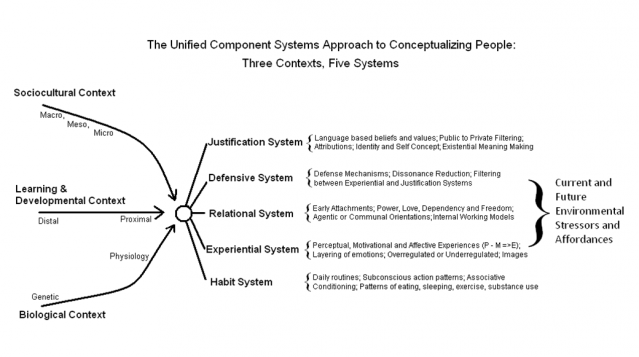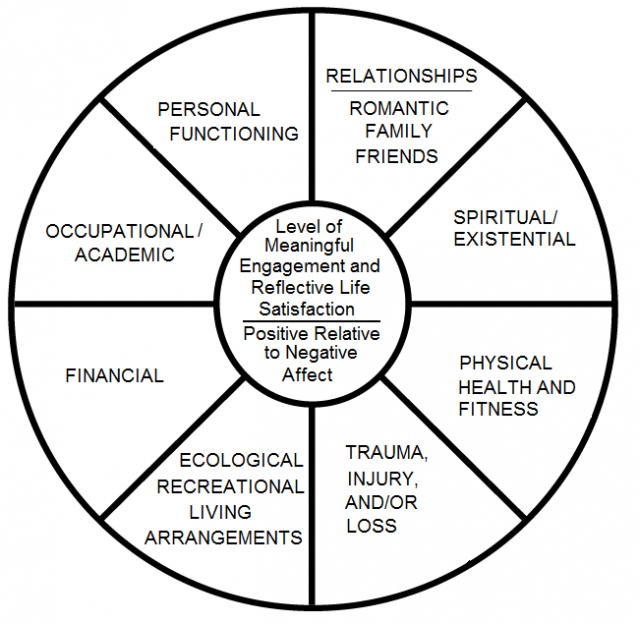Health
A Vision for Psychological Check-Ups
A frame for the elements of a psychological check-up.
Posted May 9, 2014
It is recommended that every year I go see my medical doctor for a check-up. He checks my vitals, my prescriptions, asks me if I have any unusual symptoms and basically attempts to provide me an assessment of my bio-physical functioning. Because I have a history of back problems, migraines, asthma, and high blood pressure, he pays particular attention to these issues. Although he does ask about my mood, he does not do anything I would consider an assessment of my psychological functioning. Indeed, I never have been to see a psychologist for a “psychological check-up.” Apart from recommendations that stem from my being a clinical psychologist, it has never been generally recommended that I partake in an analysis of my character, my levels of well-being and resiliency, or my psychological vulnerabilities and/or pathologies.
Most psychological assessments done today are done with the purpose to address some policy question, like whether the person in question meets criteria for some DSM diagnosis, warrants occupational or academic accommodations, or is competent to stand trial and the like. Occasionally they are done to help with therapy, but that is less common. Thus, there is a big contrast between how we look at medical check-ups and psychological assessment.
This gives rise to the question: Should our society advocate for “psychological check-ups” as part of our routine health care? (Some people, like former APA president Ron Levant, say yes). There are several issues that need to be considered in answering this question. For example, there is the issue of cost and whether it makes sense to add another major layer of health functioning to routine care. Another issue is whether we want regular monitoring of something as intimate as one’s “psychological health.”
Although these are important and legitimate questions, I will sidestep them and turn to more practical matters from the vantage point of professional psychology. If one were to advocate for such a thing, then what would a psychological check-up look like? What function should it serve and what frame should be used for the assessment? Finally, what are the domains that should be assessed? I outline my answer to these questions in the blog that follows.
In terms of the function and its benefit, it is my perspective that our society needs much education about psychological functioning, character, well-being, resiliency, and psychopathology. People need this in general and they need to have much greater levels of awareness of their own character functioning, capacity for resiliency, levels of well-being, and vulnerabilities. In this light, the primary function of a psychological check-up is to increase one’s knowledge about these things, with the idea that awareness is a crucial ingredient to foster higher levels of adaptive living.
In terms of the framing of the assessment, my approach would be that of a “therapeutic assessment” as articulated by Finn and colleagues. As stated on the TA website, “therapeutic assessment is a paradigm in which psychological testing is used to help people understand themselves better and find solutions to their persistent problems. TA differs from traditional psychological assessment, whose main goal is to diagnose disorders, plan treatments, and evaluate the effectiveness of interventions; Therapeutic assessment can serve all these purposes as well, but its primary goal is to facilitate positive changes in clients.” In other words, we should create a psychological check-up that helps people understand their character, their well-being, and their problems or vulnerabilities better so they can make choices that improve their levels of adaptive living. It is crucial to note here that the TA frame is very clear that the individuals who are being assessed should be intimately involved in the meaning and interpretation of the results—that is, the meaning should be co-constructed with the evaluator, as opposed to just the evaluator telling the individual the meaning of the results.
The next issue has to do with what should be assessed. To do this, one needs a credible map of human functioning and well-being. I outline my approach here and welcome thoughts or suggestions, if you have them. There are three basic elements, each of which is described in greater detail below. The first is the “CAST” approach (which stands for Character Adaptation SysTems) to conceptualizing people. The second is the “Character Wheel” that maps major domains of character functioning. Finally, there is the assessment of well-being.
The CAST formulation (described in more detail here) is based on the idea that there are five systems of character adaptation, which are: 1) the habit system; 2) the experiential/feelings system; 3) the relational system; 4) the defensive system; and 5) the justification system. These systems are assessed by the clinician and are placed in a bio-psycho-social context and evaluated for adaptive versus maladaptive patterns. Below is a figure that captures the CAST approach. Here is a link that describes how a clinician can assess each one to develop a holistic conceptualization, which is a narrative of the person, what drives them, and the elements in their situation that are likely to contribute to adaptive as opposed to maladaptive future patterns.

The CAST approach is useful, but it does not get at enough specificity on the key domains that define an individual’s personality and character functioning across situations. That is where the Character Wheel conception comes into play. The Character Wheel includes broad domains of personality that relate to the systems of adaptation, but can be assessed in a way that can enable a much greater understanding of the individual.

The domains of the wheel are as follows: 1) Traits and dispositions; 2) Identity and executive functioning; 3) Character strengths and values; 4) Abilities and skills; and 5) Vulnerabilities and pathologies. Here is a description of the Character Wheel.
The third area of assessment that I envision is well-being. I have an article coming out in the soon-to-be-released 2014 March issue of Review of General Psychology titled "The Nested Model of Well-being: A Unified Approach," which provides a conceptual analysis of the construct. Here is a blog that summarizes the main features. I envision the psychological check-up assessing an individual’s subjective well-being via the following lens captured by the “well-being wheel” depicted below (for a similar representation found on the net, see here).

Most central to subjective well-being is the degree to which the individual feels they are engaged in meaningful life activities and have a reflective sense of life satisfaction (or not). This is the more “cognitive” dimension of well-being, in that it relates to the individual’s evaluation of their overall life. The other central dimension refers to the “affective” component, and that is usually conceptualized as the relative ratio of positive to negative emotional states. The outer domains of the well-being wheel represent the specific life domains that contribute to one’s overall well-being. Research on subjective well-being confirms the utility of thinking about both general levels of well-being and specific domains of functioning.
As followers of this blog know, I have recently become very concerned with the emergence of a college student mental health crisis (see here and here). As a function of the documented high levels of college student distress, I have been thinking about the way to address this issue at a broad level. One part of the solution might be to develop a psychological check-up via the frame of therapeutic assessment and the conceptual lenses of character and well-being detailed here.
Procedurally, I am envisioning the following process in the context of a university setting. First, students will be able to log on to an interactive website that guides them through a series of assessments that measure the variables on the character and well-being wheels. I am guessing this will take about an hour. Then they make an hour-long appointment with a doctoral student, who will have a print out of the results and will be guided in a semi-structured interview format and the CAST approach to conceptualization. Then, the following week, the individual will return for an hour and be given a profile, summary of key findings, narrative analysis, and suggestions for enhancing adaptive living in the future.
Thus, the entire process will take students about three hours. The goal here is to help foster greater insight and awareness of one’s character structure and well-being based on reliable and valid measures of key domains, and woven together by a dialogue between a client and a clinician, and then placed in a narrative form that enriches the person’s sense of self and points them toward effective avenues of growth. The hope (which I plan on empirically testing) is that a three hour evaluation such as described here will be an effective use of time in promoting adaptive mental health.
I welcome thoughts or suggestions.




